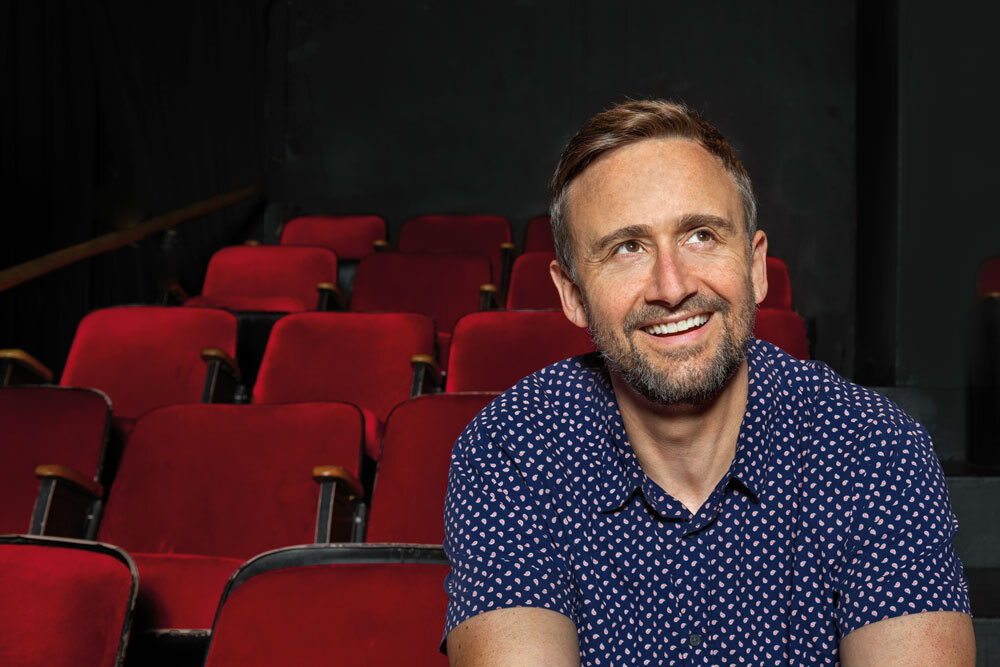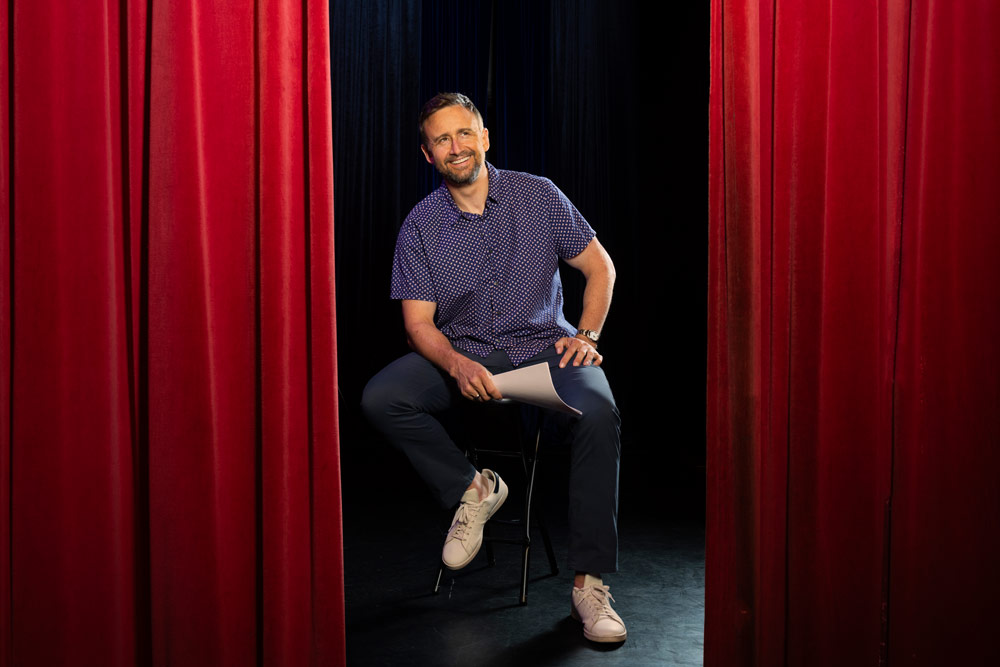
Minutes after exchanging vows, Eli Newell experienced a life-threatening cardiac emergency.
Eli Newell is a comedian, so it follows that when he tells people he passed out at his own wedding and left the reception in the back of an ambulance, many ask: “Is that a joke?”
What took place on his wedding day in May 2023, however, was definitely not funny.
Minutes after exchanging vows, Eli had a hard time breathing, lost consciousness and, while he initially thought he was overexcited, he was actually having a life-threatening emergency.
Eli’s wife, Erika, then a medical student at the Keck School of Medicine of USC, knew something was very wrong. She insisted that he get checked out by paramedics right away.
“She made a lot of decisions that probably saved my life,” Eli says, adding that Erika also insisted the paramedics call ahead to make sure Eli was given top priority at a local emergency room.
What began as a day of celebration had quickly taken a frightening turn.
Emergency care for aortic dissection
At the ER, an MRI indicated that Eli was having an aortic dissection, which occurs when a tear develops in the wall of the artery that carries blood from the heart, allowing blood to flow in between the layers of the vessel’s wall.
According to the National Institutes of Health, at least 30% of aortic dissection patients die after reaching the emergency room.
Aortic dissections typically strike quickly, with little warning, and are difficult to identify without the proper equipment. In about 95% of cases, the person has no known risk factors, as was the case with Eli, who was 46, fit and healthy at the time.
In some cases, aortic dissections can block blood supply to other parts of the body, which can lead to organ failure and death. In these cases, it is critical that blood flow be restored to the rest of the body as quickly as possible.
Unfortunately, not every hospital is staffed by doctors trained to treat these difficult cases.
Fortunately, Eli landed in the right care.
From the emergency room, Eli was transferred to Keck Hospital of USC, where surgeons from the USC Cardiac and Vascular Institute, part of Keck Medicine of USC, specialize in treating aortic dissections.

Surgery for aortic dissection
By the time the team from Keck Medicine evaluated Eli, he had lost blood flow to his legs and intestines.
“We knew this was going to be a race against the clock,” says Sukgu Han, MD, MS, a vascular surgeon and co-director of the USC Comprehensive Aortic Center, part of the USC Cardiac and Vascular Institute. “Our biggest concern was restoring blood flow to the rest of the body and doing it quickly.”
Sanjeet Patel, MD, PhD, a cardiothoracic surgeon with the USC Comprehensive Aortic Center and director of the USC Genetic Aortic and Related Disorders Center, determined that Eli required a Bentall procedure, a surgical process during which an artificial valve and woven graft are used to reconstruct the aorta from the heart up to the neck and then reconnected to the coronary arteries.
This operation prevents the aortic dissection from further damaging the heart. However, Eli, like many patients following the operation, also needed more blood flow restored to the rest of his body.
Dr. Han and Dr. Patel discussed how to approach both procedures and decided to utilize a new method: implanting a device, a specialized stent, that could help reconstruct the portion of Eli’s aorta in his chest while opening the rest of his aorta to improve blood flow to his body and legs.
“I told his wife and mother, ‘This is the device we have been waiting for to help people just like Eli,’” Dr. Patel says.
Surgical expertise for treating aortic dissections
According to Dr. Patel, the fact that Keck Medicine is an academic institution gives its physicians access to the most advanced medical devices at all stages of treatment and research.
After Dr. Patel finished repairing and reconstructing Eli’s aorta, Dr. Han helped relieve the pressure that had built up in his legs.
Their approach was a success, not only saving Eli’s life but also allowing him to avoid amputations, which are sometimes needed when blood flow is not restored quickly enough to a patient’s legs.
Luckily, I was surrounded by doctors who sent me to the right hospital, and I was treated by an amazing team.
Eli Newell, patient, USC Comprehensive Aortic Center
Though aortic dissections are relatively rare, most area hospitals refer patients to Keck Medicine, so the team has more experience treating them than most institutions in the Los Angeles area. Keck Medicine was among the first institutions to pair cardiac and vascular surgeons to treat these difficult cases, an approach that is still rare but is increasingly being adopted by other top-level institutions.
Given their depth of experience and team approach, Dr. Han says, the USC Comprehensive Aortic Center’s surgical teams can tailor treatment to the needs of the individual patient and are highly skilled at handling complications, such as the swelling that occurred in Eli’s legs after blood flow returned.
“Because we see a higher volume of these patients, everyone on our team has more experience,” Dr. Patel says. “Our nurses, anesthesiologists and intensivists all know how to care for these patients and anticipate complications.”
Wedding after cardiac recovery
Eleven days later, Eli returned home. He had a lot of pain and needed a walker, but he was grateful to still have his legs.
During Eli’s recovery, he and Erika decided they needed a do-over of their wedding.
Eight months later, they held another ceremony — only this time they were able to take to the dance floor.
“He’s doing great,” Dr. Patel says. “He’s back to his normal life.”
As dramatic as his first wedding day was, Eli says that a lot went right that day.
“I could have been on a plane or in the desert in Jordan on our honeymoon, and I would have been toast,” says Eli, who still has some nerve pain in his leg but is back at work preparing to host a live dating show at the Upright Citizens Brigade, a comedy theater where he and Erika first met. He also recently started jogging.
“Luckily, I was surrounded by doctors who sent me to the right hospital, and I was treated by an amazing team.”
Interested in supporting the work of Keck Medicine? Visit this page.
Topics


